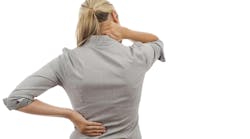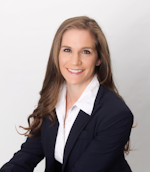The approach to polishing teeth has evolved significantly since the ancient Roman and Greek eras. Generalized polishing has long been a standard practice, so much so that many patients believe polishing is the cleaning! Thankfully, the concept of selective polishing is gaining recognition for its numerous benefits. This article explores the advantages of selective polishing, including the rarely considered ergonomic benefits, restoration preservation, alternative methods for stain and biofilm removal, as well as verbiage to begin a conversation for selective polishing that leaves patients with all their enamel, and happy with that smooth feeling they expect after a dental hygiene visit.
Ergonomic considerations
The ergonomic advantages of selective polishing are the reduction of wrist drag and pinch force experienced by dental hygienists during procedures that lead to musculoskeletal disorders. Since dental hygienists are in the “very high risk” levels for MSDs, this should be considered when choosing our methods for biofilm, debris, and stain removal.1 Studies indicate that instrumentation results in 75% of dental hygienists experiencing wrist flexion or extension under load while out of neutral position, and polishing further increases that load through increased pinch force to hold onto a bigger, heavier device.1 Polishing also requires extensive wrist movement and sustained pressure, leading to discomfort and potential musculoskeletal disorders over time.
Research indicates that ergonomic equipment in dental hygiene can significantly reduce the risk of repetitive strain injuries (RSIs) such as using a cordless polisher, for example, which reduces the time spent polishing, thus reducing quantitative pinch force and wrist drag.2 By focusing on only specific areas that require polishing, dental hygienists can perform their tasks more efficiently and with less physical strain.
Alternatives to traditional polishing
The primary purpose of polishing is to remove stains and biofilm from the tooth surface. We know that conventional polish removes enamel,3 and regardless of how much, that’s not the goal in a population where diets are acidic and dentinal sensitivity is high. However, it is essential to recognize that polishing (especially with medium or coarse pastes) is no longer the only—or even an optimal—method for achieving this goal. Selective polishing can be complemented by or even replaced by other effective techniques, such as ultrasonic scaling, air polishing, the use of fine prophylactic pastes that are less abrasive, or no paste in the cup.
Ultrasonic scaling, for instance, has been shown to effectively remove biofilm, stain, and calculus without the need for traditional polishing.3 With the back or side of an ultrasonic insert, use wider and lighter sweeping movements from side-to-side beginning at the most coronal end of the tooth to disrupt the plaque and work toward the gingiva. Additionally, air polishing systems utilize a stream of air and fine erythritol-powder to remove stains and biofilm, providing a less abrasive alternative that can be particularly beneficial for patients with sensitive teeth or restorations. Studies show that air polishing produces equal or better long-term bleeding on probing and plaque index scores compared to traditional polishing, and that patients perceived comfort was higher while time requirements were less.4 If traditional polishing is absolutely a must, consider reducing unnecessary enamel wear by using a no- or fine-grit polishing paste containing perlite, which shows less abrasiveness than conventional pastes,5 or just use the cup without paste. A webbed cup can be effective while preserving enamel and composite restorations.
Abrasive paste isn’t for everyone
Selective polishing addresses the contraindications associated with conventional polishing of dental restorations. Many dental materials, such as composite resins and porcelain, can be adversely affected by conventional polishing pastes, especially with more applied pressure. Overpolishing can lead to enamel degradation, loss of gloss, and even microfractures in restorations.3,6 The American Academy for Oral and Systemic Health (AAOSH) says that “To achieve a polished surface, [polishing] particles must be only one to two units on the scale harder than the substrate being polished. With so many substrates in the oral cavity requiring independent maintenance, one prophylaxis paste is not suitable for all.”7 By blanket polishing with abrasive paste, we inadvertently create an environment that can lead to restoration failure and/or increased risk for elevated pathogens in the mouth.
Communication is key
Not ready to jump on board or think there’s no way your patients will agree? Start by asking if they like the polishing part. When implementing this question, I was surprised at how many patients don’t like it! Most said, “I didn’t know it was optional.” This opens the door to education on when it should or should not be used, and what the benefits and alternatives are. Keep in mind that learning any new technique or changing your process requires patience, time, and good communication with the patient. Verbiage used with patients is crucial to success with anything new or different. My approach is enthusiastic and straightforward. “Mr. Smith, I recently learned a way to use this same instrument (ultrasonic) I’ve been using for years to polish, so that you get the smooth feeling you like and without putting the gritty material on your teeth. Let me know what you think when I’m done, but I can still use the gritty stuff at the end if you’d like.” Ask them to run their tongue over their teeth when done and if the teeth feel smooth.
After six months of practicing this with my patients, I found that only one patient wanted me to use traditional polish, and it was because “I like the mint flavor when you’re done” and our office didn’t offer mouthrinse. This type of communication doesn’t discredit what we’ve done or why we didn’t do it this way all along and shows that we are lifetime learners, always advancing for their benefit. One caution is to make sure that the entire hygiene team and doctors are on board with any changes, as it can cause confusion for patients if all parties aren’t united in practice protocols.
A welcome evolution
Choosing selective polishing offers numerous benefits over generalized polishing as a one-size-fits-all prophy paste type of biofilm and stain removal. By reducing wrist drag and pinch force, hygienists can work more ergonomically and comfortably. Furthermore, selective polishing helps avoid the contraindications associated with polishing restorations, safeguarding the integrity of dental materials. As the field of dental hygiene continues to evolve, embracing selective polishing can lead to improved patient outcomes and enhanced practitioner well-being.
Editor's note: This article appeared in the March 2025 print edition of RDH magazine. Dental hygienists in North America are eligible for a complimentary print subscription. Sign up here.
References
- Ćwirzeń W, Wagner L. Evaluating the dental hygienists’ exposure to the risk of musculoskeletal disorders. Eur J Dent. 2023;17(3):629-635. doi:10.1055/s-0042-1750772.
- McCombs G, Russell D. Comparison of corded and cordless handpieces on forearm muscle activity, procedure time and ease of use during simulated tooth polishing. J Dent Hyg. 2014;88(6):386-393.
- Pence SD, Chambers DA, van Tets IG, et al. Repetitive coronal polishing yields minimal enamel loss. J Dent Hyg. 2011;85(4):348-357.
- Kumar A, Patel R, Singh V. The effects of polishing on dental restorations: a systematic review. J Dent. 2020;98:103-110.
- Covey DA, Barnes C, Watanabe H, Johnson WW. Effects of a paste-free prophylaxis polishing cup and various prophylaxis polishing pastes on tooth enamel and restorative materials. Gen Dent. 2011;59(6):466-473; quiz 474-475.
- Mensi M, Scotti E, Sordillo A, Dal. M, Calza S. Air-polishing followed by ultrasonic calculus removal for the treatment of gingivitis: a 12-month, split-mouth randomized controlled clinical trial. Int J Dent Hyg. 2024;22(4):949-958. doi:10.1111/idh.12812.
- Lutz F, Imfeld T. Advances in abrasive technology--prophylaxis pastes. Compend Contin Educ Dent. 2002;23(1):61-64, 66, 68 passim; quiz 72.









